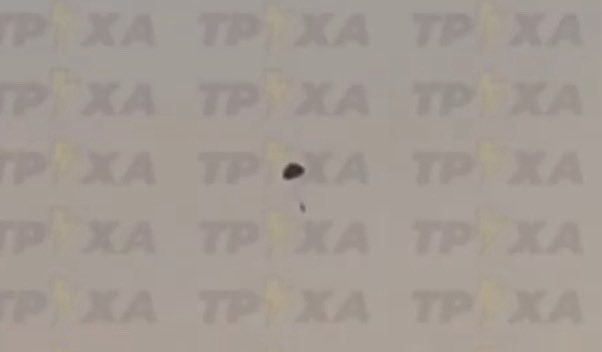A Mirage 2000 Crashed—Costing Ukraine a Critical Jamming Capability
The Ukrainian air force is losing too many Western fighters
The Ukrainian air force has lost one of the precious few ex-French Dassault Mirage 2000 fighters it began receiving back in February.
“An aircraft equipment failure occurred” during a Tuesday evening training flight, the air force reported. The pilot ejected—and a search team quickly fetched him. “There were no casualties on the ground,” according to the air force.
It’s a painful blow to an air force that is struggling to maintain a credible fleet of Western-made fighters and pilots to fly them. The service has also lost four of its ex-European Lockheed Martin F-16s since the fighters began flying combat sorties back in August.
More Mirage 2000s and F-16s are coming, but not many more. In all, France has pledged around a dozen surplus Mirage 2000s; Belgium, Denmark, The Netherlands and Norway have pledged 87 F-16s. So far just six or so of the former and a few dozen of the latter have shipped; of those, five have crashed or been shot down. Three pilots have died.
Between its surviving ex-Soviet Sukhoi Su-24s, Su-25s and Su-27s, Mikoyan MiG-29s and the Mirage 2000s and F-16s, the Ukrainian air force probably still operates more than 100 fighters—roughly as many as it had before Russia widened its war on Ukraine in February 2022.
But the Mirage 2000s and F-16s are special.
With the help of their allies, the Ukrainians have upgraded their ex-Soviet jets to carry new precision munitions including cruise missiles and glide-bombs. But the Western jets are even better-equipped—especially when it comes to defensive systems.
The Americans have equipped the Ukrainian F-16s with underbelly AN/ALQ-131 electronic countermeasures pods.
The AN/ALQ-131 is a new and critical capability for the Ukrainian air force, which entered the wider war in 2022 without significant aerial jammers. That exposed Ukrainian jets to withering Russian missile fire—and resulted in heavy losses early on.
The Ukrainians have written off nearly 100 jets, many of them in the chaotic early weeks of the wider Russian invasion.
In addition to the AN/ALQ-131s, the F-16s have the option of carrying the Pylon Integrated Dispensing System and the Electronic Combat Integrated Pylon Systems: PIDS and ECIPS.
PIDS ejects metal chaff and hot-burning flares to spoof incoming radar- and infrared-guided anti-aircraft missiles. ECIPS houses passive defenses to complement the active chaff and flares, including the AN/ALQ-162 jammer for defeating radars on the ground, as well as an AN/AAR-60 missile warning system for triggering the defenses.
The AN/ALQ-131 in particular can “give you a pocket of air superiority for a moment’s time to achieve an objective that has strategic importance and impact,” a USAF official explained.
Aerial jammers
The Mirage 2000s are similarly equipped with a combination of a Serval radar warning receiver, a Sabre jammer and an Eclair chaff and flare dispenser. This electronic countermeasures suite was on the cutting edge of aerial warfare in the 1980s, but began to fall behind a generation later.
Recognizing this weakness, and appreciating the seriousness of the Russian missile threat over Ukraine, the French defense ministry promised to install new electronic countermeasures in the Mirage 2000s before transferring them to Ukraine. It’s likely the ministry was referring to the mostly analogue Integrated Countermeasures Suite Mark 2 or the fully digital Integrated Countermeasures Suite Mark 3.
The Ukrainian air force has been taking full advantage of its F-16s’ and Mirage 2000s’ ability to fill Russian radar screens with electronic noise. The F-16s “act as ‘flying air defense’ with advanced missile warning tech,” the pro-Ukraine Conflict Intelligence Team analysis group noted.
The arrival of the first F-16s back in August, and the first Mirage 2000s six months later, allowed the air force to organize complex strike packages mixing ex-Soviet and ex-European jets combining different offensive and defensive capabilities.
“Sometimes when we arrive, there are already F-16s waiting there, or sometimes Mirages,” a Ukrainian fighter pilot said in an official video from March. The F-16s and Mirage 2000s “either cover the whole package that is sent there to [strike] our enemies, or also strike [themselves],” the pilot said.
All that is to say, every F-16 or Mirage 2000 Ukraine loses costs it more than a single airframe. Without the critical jamming capability the ex-Western jets provide, Ukraine’s complex strike packages could unravel.
Read more:
Ukraine Is Wasting Its F-16s
Ukraine lost another Lockheed Martin F-16 fighter on Sunday—its fourth since the first of the supersonic F-16s, donated by a Belgian-Danish-Dutch-Norwegian consortium, arrived in Ukraine in August.




